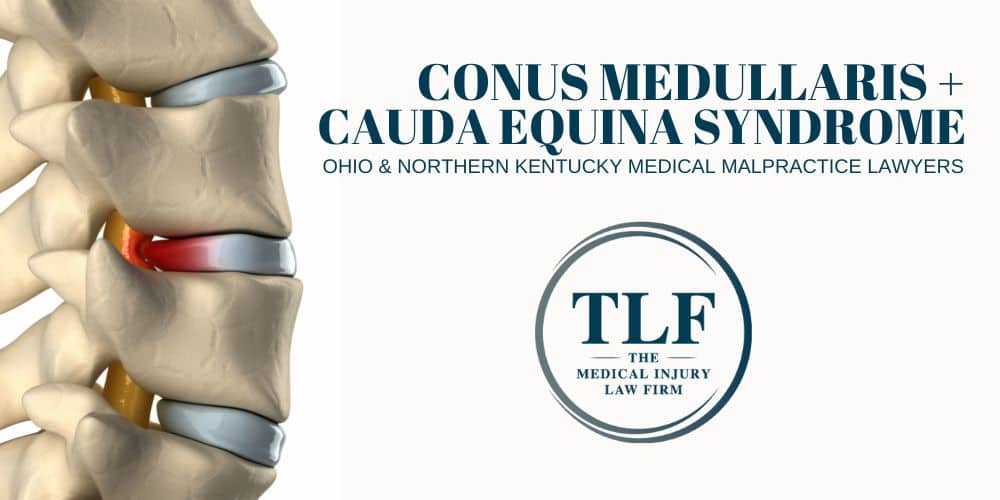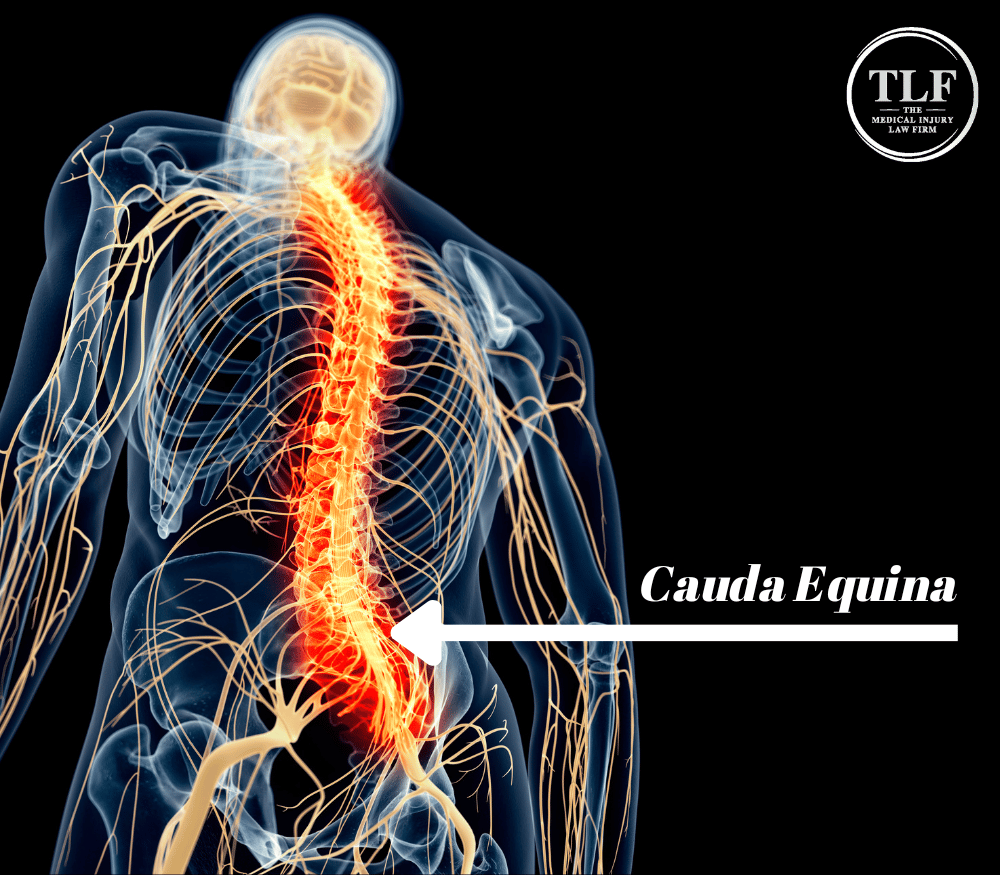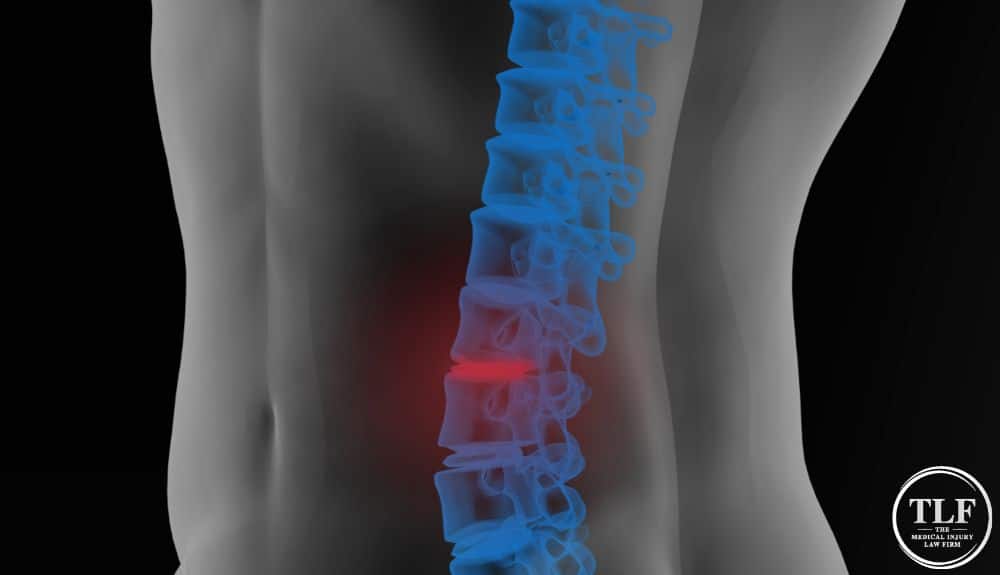Putting Our Knowledge And Experience To Work
Home » Medical Malpractice » Conus Medullaris and Cauda Equina Syndrome
Conus Medullaris and Cauda Equina Syndrome Malpractice Lawyers
Cincinnati and Northern Kentucky Medical Malpractice Lawyers for Spinal Cord Injuries
Any spinal cord injury is a cause for great concern, as damage to the spinal cord can lead to lifelong injuries, pain, paralysis, and in some cases, even death. Medical professionals know just how catastrophic a spinal cord injury can be to a victim, which is why they must take extreme care in handling these types of injuries. For example, failure to diagnose and treat conditions such as cauda equina syndrome and conus medullaris syndrome can be devastating for a patient, resulting in a lifetime of pain and suffering.

If this sounds familiar and you or a loved one suffered from a misdiagnosis or delayed diagnosis of conus medullaris or cauda equina syndrome, you may be able to recover compensation for your injuries. At TLF: The Medical Injury Law Firm, our Ohio and Northern Kentucky medical malpractice attorneys have seen firsthand the consequences of medical negligence when it comes to diagnosing and treating spinal cord injuries, and we know what this can do to victims and their families. That’s why we want to help you obtain justice for your preventable injuries by holding the negligent medical professionals responsible and helping you obtain damages for the suffering you’ve experienced, both physical and mental.
To speak with an experienced Covington, Cincinnati, or Dayton personal injury attorney at TLF about your potential spinal cord injury malpractice case, please give us a call at (800) 698-4054 to set up your free consultation today.
What is Cauda Equina Syndrome?
The cauda equina (“horse’s tail”) is the collection of nerves at the end of the lumbosacral spine. They are not a part of the boney spinal cord, but rather are the 20 spinal nerve roots below what is called the conus medullaris. These nerve roots supply motor function and physical sensation to the legs, bladder, and bowels. When these integral nerve roots become compressed or injured, a condition known as cauda equina syndrome may result.
Cauda equina syndrome, also referred to as CES, may present as either a complete or incomplete spinal cord injury. Complete spinal cord injuries occur when sensory and motor function are lost below the site of the injury, whereas with incomplete spinal cord injuries, some function and sensation remain.
What Level is Cauda Equina?
Within the spinal cord are seven cervical segments (C1-C7), twelve thoracic segments (T1-T12), five lumbar segments (L1-L5), five sacral segments (S1-S5), and 1 coccygeal segment. These levels refer to different regions of the spinal cord, such as the cauda equina and conus medullaris, for example.
The lower end of the spinal cord where the cauda equina is located includes levels L1-L5. Cauda equina syndrome, however, typically presents when the L3-L5 nerve roots are damaged.

Cauda Equina Syndrome Symptoms
Cauda equina syndrome (CES) symptoms vary depending on whether the patient is suffering from complete spinal cord injuries or incomplete spinal cord injuries. Regardless, symptoms to watch out for that may be signs of CES include:
- Severe pain in the lower spine region
- Bladder dysfunction (urine retention)
- Weakness or numbness in one or both legs
- Paralysis of lower extremities
- Bowel and bladder dysfunction (including urine retention and incontinence)
- Sexual dysfunction
- Sensory disturbance in the “saddle” area (genitals, anus, and buttock region)
If you suffer from any of these symptoms, it’s imperative that you seek help from a medical professional right away. Failure to diagnose cauda equina syndrome and provide treatment in a timely fashion can lead to worsened injuries and can bring about further complications.
Causes of Cauda Equina Syndrome
There are a number of potential causes of spinal cord compression leading to cauda equina syndrome. These spinal injuries can occur in both adults and children but are more common in adults. Some of the most common causes of CES include:
- Herniated disc
- Traumatic events (motor vehicle accidents, gunshot wounds, stab wounds, work-related accidents, serious falls, etc.)
- Spinal stenosis (narrowing of the spinal canal)
- Birth defects
- Spinal lesions
- Spinal tumors
- Postop surgery complications, including spinal anesthesia errors
- Hemorrhaging
- Epidural hematoma
- Infections or inflammation of the spine
- Aortic obstruction or thrombosis
- Defective medical devices or improper placement of devices
- Chiropractic malpractice
What is Conus Medullaris Syndrome?
The conus medullaris and cauda equina are closely related, but they are not one and the same. The conus medullaris refers to the tapered end of spinal cord nerves that ends where the cauda equina begins. A spinal cord injury that results in compression to the lumbar vertebrae may result in what is called conus medullaris syndrome, or CMS.
What Level is Conus Medullaris?
The conus medullaris typically occurs at level L1 in the average adult body. However, conus medullaris syndrome may result from compressive damage to levels T12-L2 of the spinal cord.

Conus Medullaris Syndrome Symptoms
Conus medullaris syndrome and cauda equina syndrome both present similar symptoms, including severe back pain; sexual dysfunction; weakness or numbness in the lower half of your body; incontinence; and other similar disruptions to motor and sensory function.
Causes of Conus Medullaris Syndrome
Like cauda equina syndrome, conus medullaris syndrome is a result of some kind of trauma to the lower spine. This includes infections, tumors, injuries from auto accidents, and other abnormalities to the spinal cord.
Conus Medullaris vs. Cauda Equina Syndrome
Although both CMS and CES may result from similar circumstances and present similar symptoms, the two conditions must be treated differently. This means it is up to trained healthcare professionals to observe the slight nuances between the two conditions to provide the appropriate diagnosis.
For example, compared to CES, symptoms of CMS typically present suddenly and on both sides of the body. Meanwhile, CES often develops over time and may produce symptoms that affect one side of the body more than the other. These factors, along with other seemingly minuscule variations in symptoms, can help secure the proper diagnosis and thus, proper treatment for the affected individual.
Conus Medullaris and Cauda Equina Malpractice Claims
Diagnosing cauda equina syndrome and conus medullaris syndrome is imperative to the safety and health of an injured patient. Misdiagnosis or the failure to provide a timely diagnosis and/or to treat CES or CMS can lead to life-long impairment and catastrophic injuries, including permanent incontinence and partial paralysis. As such, malpractice suits involving these types of claims are extremely common.
In order to provide an accurate and timely diagnosis, physicians should take all the necessary steps to eliminate certain diagnoses and confirm another. This includes conducting tests such as MRIs, CT scans, and myelograms as well as providing physical examinations and analyzing a patient’s medical history.
When a physician fails to provide the appropriate and standard level of care, a breach of duty has occurred. As such, the victim may be able to recover financial compensation for their losses through a medical malpractice claim against the negligent physician. This includes damages for all related medical expenses (hospital stays, surgery, physical therapy, etc.), lost wages, pain and suffering, and more.

How the Ohio and Kentucky Spinal Cord Injury Attorneys at TLF Can Help
Regardless of whether they were originally injured in a motor vehicle accident, contracted a tumor on their spine, or developed conus medullaris or cauda equina syndrome in any other way, the haste and diligence in which a patient is treated by doctors play an integral role in their recovery. If a doctor did not take the proper steps to secure a diagnosis of either CMS or CES and failed to provide timely treatment to correct the injury, the affected patient and their family may suffer the consequences for the remainder of their life.
If this sounds like the case for you or a loved one, you may have a valid medical malpractice claim. When you reach out to the Ohio and Northern Kentucky spinal cord injury attorneys at TLF: The Medical Injury Law Firm, we can help determine where you stand in your case and what the best move forward may be.
For a free consultation with the dedicated attorneys at TLF, give us a call at 859-578-9130 (Kentucky office), 513-651-4130 (Ohio office), or toll-free at 800-698-4054. You can also complete our online claim form to get in touch.
Practice Areas
You Pay No Fees Unless We Win!
We are happy to offer a free consultation to evaluate your case. If you hire us as your legal counsel, we will represent you on a contingency-fee basis. You will pay no attorneys’ fees unless we recover financial damages.
